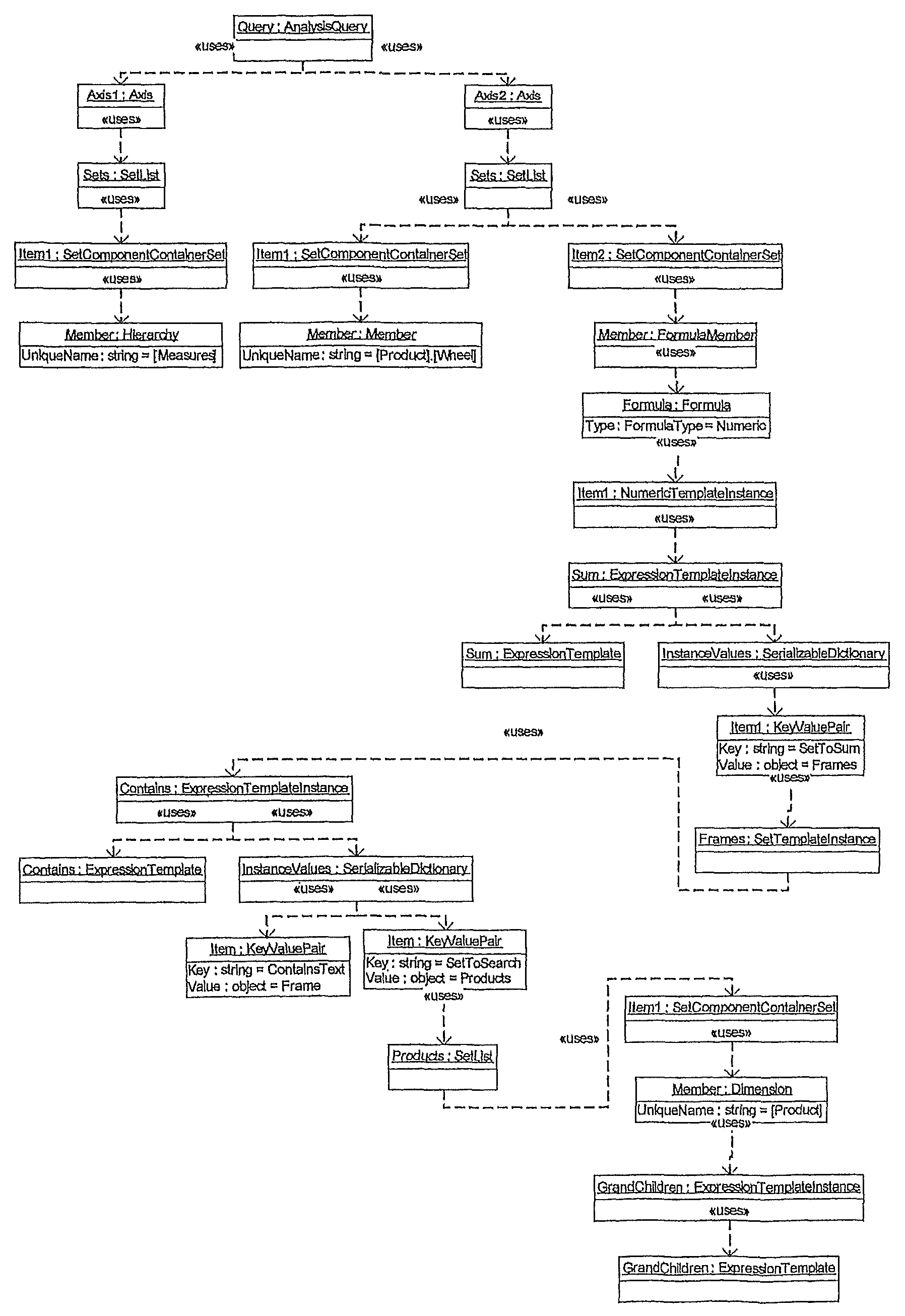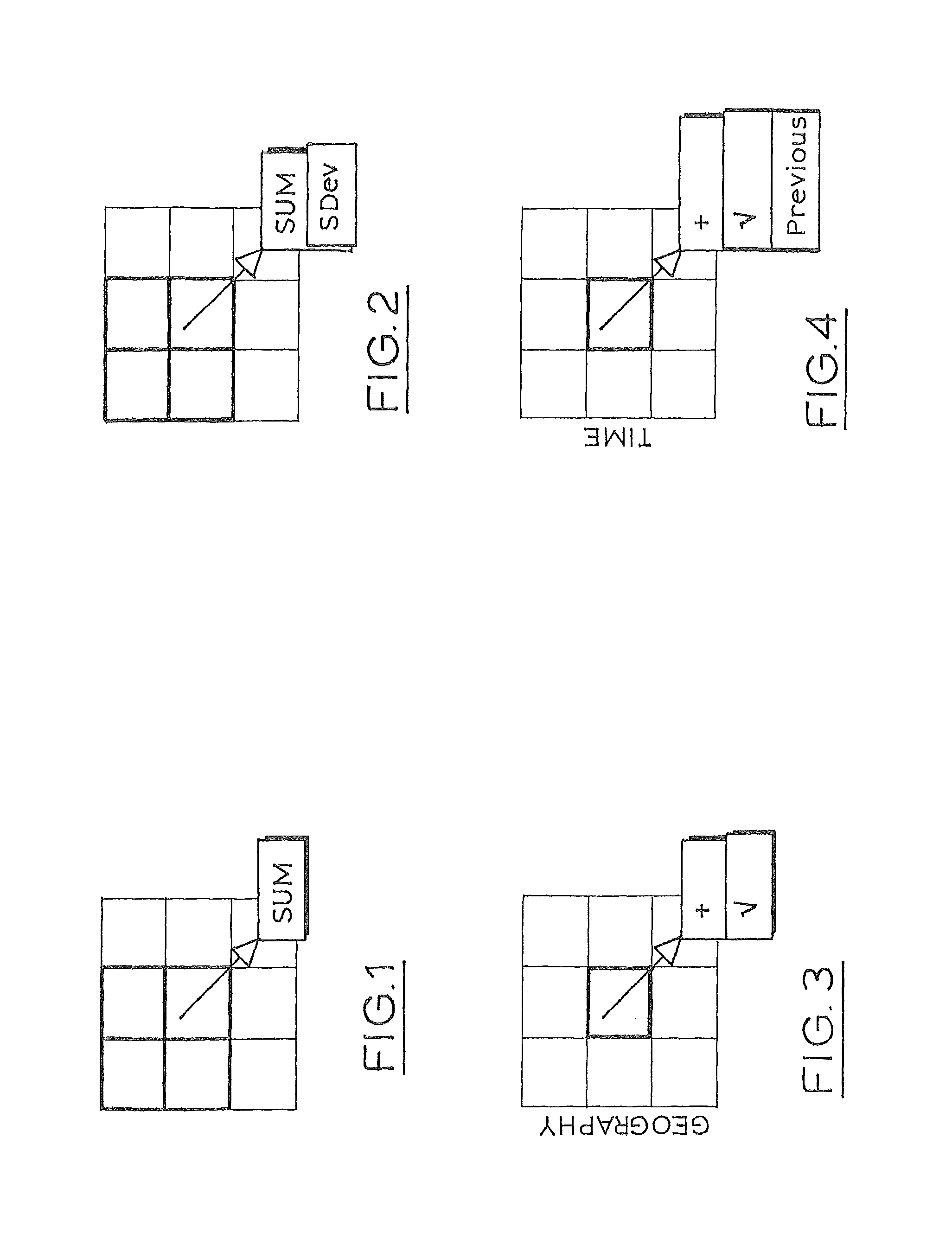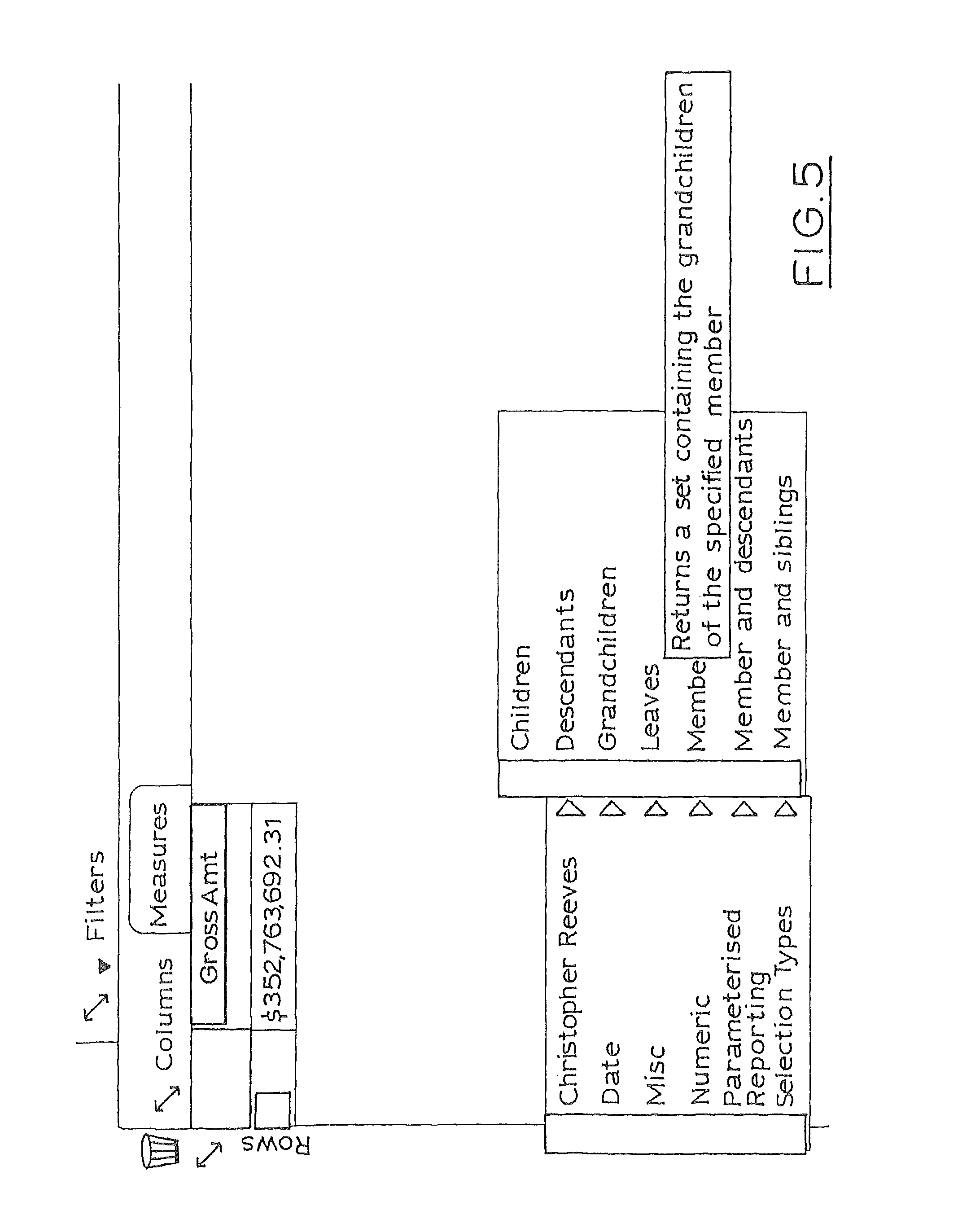Content based approach to extending the form and function of a business intelligence system
a business intelligence and content-based technology, applied in the field of content-based approach to extending the form and function of a business intelligence system, can solve the problems of daunting end-user experiences, expensive implementations, etc., and achieve the effect of reducing the reliance on experts and being affordable for small businesses
- Summary
- Abstract
- Description
- Claims
- Application Information
AI Technical Summary
Benefits of technology
Problems solved by technology
Method used
Image
Examples
worked example
[0127]For the purposes of demonstrating the core components of the invention, a worked example will now be provided. The problem statement is: to provide an analysis grid, with the aggregate of all wheel sales and frame sales in rows. The hypothetical OLAP cube does not currently have a frame member, but rather multiple frame members as can be seen in FIG. 6.
[0128]It is worth noting that such an extensible BI application, as envisaged, allows for multiple ways of skinning this cat and the following is just one such approach. The first step is to define an analysis with the default measure on Columns and then make use of a reference template (described in detail later) to obtain all the grandchildren of the Product dimension's default member. FIG. 6 shows the context menu available on the member. This is an extremely important component of the invention. The context menu is filtered based on the type system and semantic logic provided by the expression template designer. For example ...
PUM
 Login to View More
Login to View More Abstract
Description
Claims
Application Information
 Login to View More
Login to View More - R&D
- Intellectual Property
- Life Sciences
- Materials
- Tech Scout
- Unparalleled Data Quality
- Higher Quality Content
- 60% Fewer Hallucinations
Browse by: Latest US Patents, China's latest patents, Technical Efficacy Thesaurus, Application Domain, Technology Topic, Popular Technical Reports.
© 2025 PatSnap. All rights reserved.Legal|Privacy policy|Modern Slavery Act Transparency Statement|Sitemap|About US| Contact US: help@patsnap.com



